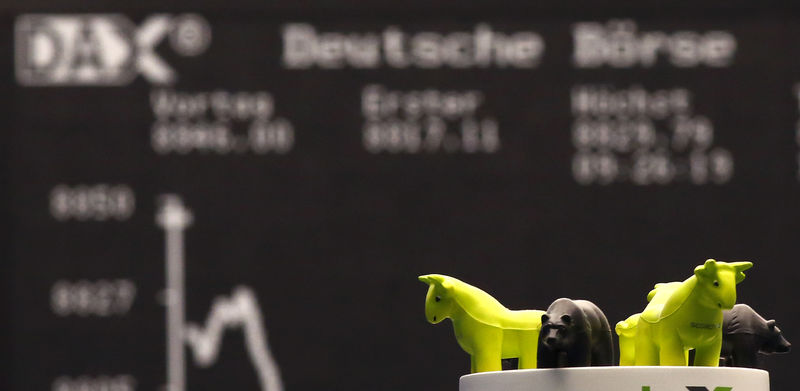By Geoffrey Smith
Investing.com -- Perhaps Europeans just aren’t optimistic enough. Their continent is well ahead of the U.S. in terms of bringing the Covid-10 pandemic under control, and looks likely to do a better job of supporting consumer incomes, through the crisis, but you wouldn’t guess it from the stock market performance.
After another lackluster week, with a rise of only 0.9% despite a steady stream of news flow about economic reopening, the Stoxx 600 is still down 18% for the year, underperforming the S&P 500’s 10% drop and even the 16% decline notched by the Dow Jones Industrial Average. The Nasdaq Composite, meanwhile, has disappeared over the horizon, having now made it back to its 2020 starting point.
The composition of the respective indices explains a lot: the Stoxx 600 is dominated by traditional cyclical and financial stocks, many of which are now facing just the latest in a series of existential challenges.
European markets have not had the support from heavily-weighted tech companies truly positioned to exploit the pandemic's most immediate effect: the quickening transition to a digital and often remote economy. There is no European company to rival Amazon.com (NASDAQ:AMZN), Microsoft (NASDAQ:MSFT) and Alphabet (NASDAQ:GOOGL) in cloud storage; for Netflix (NASDAQ:NFLX), the best that Europe can offer is ITV (LON:ITV), Prosieben or a Vivendi (OTC:VIVHY).
Even the biggest online-only retail or Internet names such as Zalando (DE:ZALG), Adyen (AS:ADYEN) or Just Eat Takeaway (AS:TKWY) are not big enough to move the broader market’s dial. Those that are, such as SAP (DE:SAPG), have been hobbled by individual problems, the German enterprise software giant ditching co-CEO Jennifer Morgan only a few months after appointing her. Ocado (LON:OCDO), the U.K.-based online grocery store that morphed into an infrastructure provider for supermarkets' online channels, is an honorable exception.
To find other European companies that really are in a Covid-created sweet spot, you have to look very hard. Europe's closest approximation to Zoom Video (NASDAQ:ZM), for example, is German-based TeamViewer (DE:TMV), a provider of remote technical support. TeamViewer, which went public last year at a price of 26.50 euros, has risen 65% since then, which is also more or less what it has gained since the height of the March panic. It reports its first-quarter earnings next week.
Payments company Adyen, a 2018 market debutant, has done even better, more than doubling since its IPO. It has hit a series of new record highs in recent days, as both it and sector peers PayPal and Square (NYSE:SQ) have talked of boom times ahead. But Adyen’s very rarity means that investors have to pay a ferocious premium to hold it: the stock now trades at 13 times 12-month trailing sales.
That’s a valuation that suggests desperation in the search for any business model that offers a truly viable future. Given the certainty of an unprecedented contraction in the economy, and the lack of certainty about the shape of any subsequent recovery, that desperation is likely to be reflected in prices for some time.
